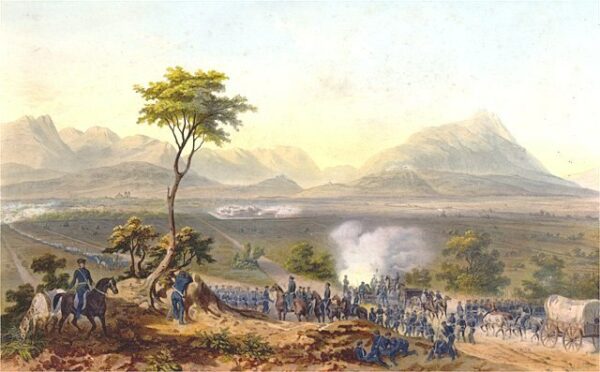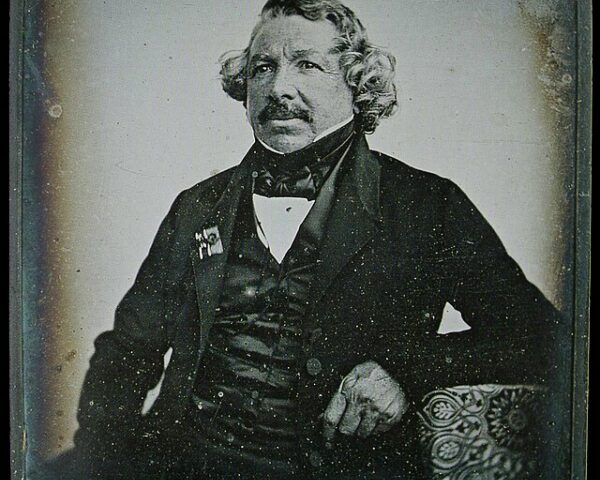On September 24, 1846, General Zachary Taylor successfully captured Monterrey during the Mexican-American War, marking a decisive victory for the United States in its campaign against Mexico. The capture of Monterrey was a turning point in the war, establishing Taylor’s military reputation and paving the way for future American successes. This moment not only showcased the military prowess of the U.S. Army but also revealed Taylor’s leadership and strategic acumen, which would later contribute to his rise as a national figure.
The road to Monterrey began with escalating tensions between the United States and Mexico following the U.S. annexation of Texas in 1845, a move Mexico vehemently opposed. By April 1846, these tensions had boiled over into war. General Zachary Taylor, who had already led U.S. forces to victories at Palo Alto and Resaca de la Palma, was tasked with advancing further into Mexican territory. Monterrey, located in the northeastern part of Mexico, was a key military and economic stronghold, and capturing it would give the U.S. control of a vital region.
Defending Monterrey was General Pedro de Ampudia, who commanded a Mexican force of about 7,000 soldiers. The city was heavily fortified, surrounded by mountains and protected by several strongpoints, including the strategically important Bishop’s Palace. Taylor, leading a smaller army of roughly 6,600 men composed of both regular soldiers and volunteers, knew that taking Monterrey would not be an easy task. The rugged terrain and formidable defenses posed significant challenges, but Taylor was determined to press forward.
The battle for Monterrey began on September 20, 1846. Taylor’s forces approached the city from multiple directions, seeking to encircle and isolate it. Over the next few days, the U.S. troops engaged in grueling combat, facing intense resistance from the Mexican defenders. The fighting was especially fierce because much of it took place in the streets of Monterrey, a type of warfare that was unusual for the time. House-to-house combat, with U.S. troops clearing buildings and advancing through narrow, fortified streets, made progress slow and costly.
Key to the U.S. victory was the capture of the Bishop’s Palace, a fortified position perched on a hill that overlooked the city. After days of heavy fighting, Taylor’s troops seized the palace on September 22, giving them a commanding view of Monterrey and weakening the Mexican defensive line. With this strategic position in U.S. hands, Taylor’s forces were able to increase pressure on the Mexican army.
By September 24, it became clear that the Mexican defenders could no longer hold their positions. Outgunned and outmaneuvered, General Ampudia requested a truce to negotiate the terms of surrender. Although some of Taylor’s officers advocated for a more aggressive approach, Taylor opted for a humane resolution. He agreed to allow the Mexican forces to withdraw with their arms and dignity intact, sparing further bloodshed and ending the battle. This decision, while criticized by some in the United States, reflected Taylor’s belief in a quick, honorable conclusion to the fighting.
The capture of Monterrey was a significant boost for the U.S. war effort. Taylor’s reputation as a capable and decisive military leader grew, and his successes in Mexico would later catapult him to national fame, ultimately leading to his election as the 12th President of the United States. However, Taylor’s lenient terms for the Mexican surrender sparked controversy back home, with some politicians arguing that he should have demanded an unconditional surrender to maximize the U.S. advantage.
In the broader context of the war, the fall of Monterrey dealt a serious blow to Mexican morale and weakened their military presence in the north. It also paved the way for further American advances deeper into Mexican territory. The Mexican-American War, which officially ended in 1848 with the Treaty of Guadalupe Hidalgo, resulted in the U.S. acquiring vast portions of Mexico, including modern-day California, Arizona, and New Mexico.






